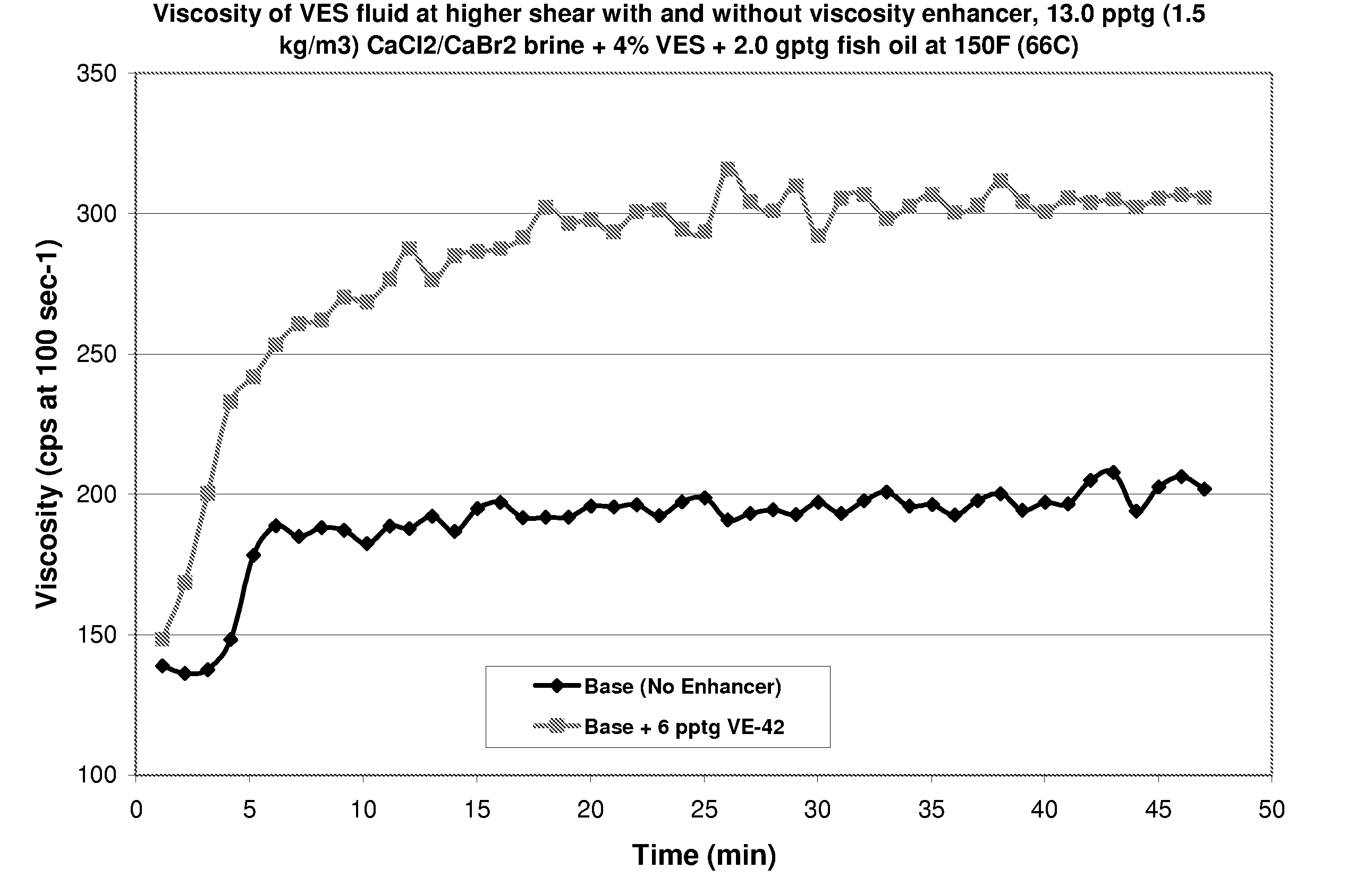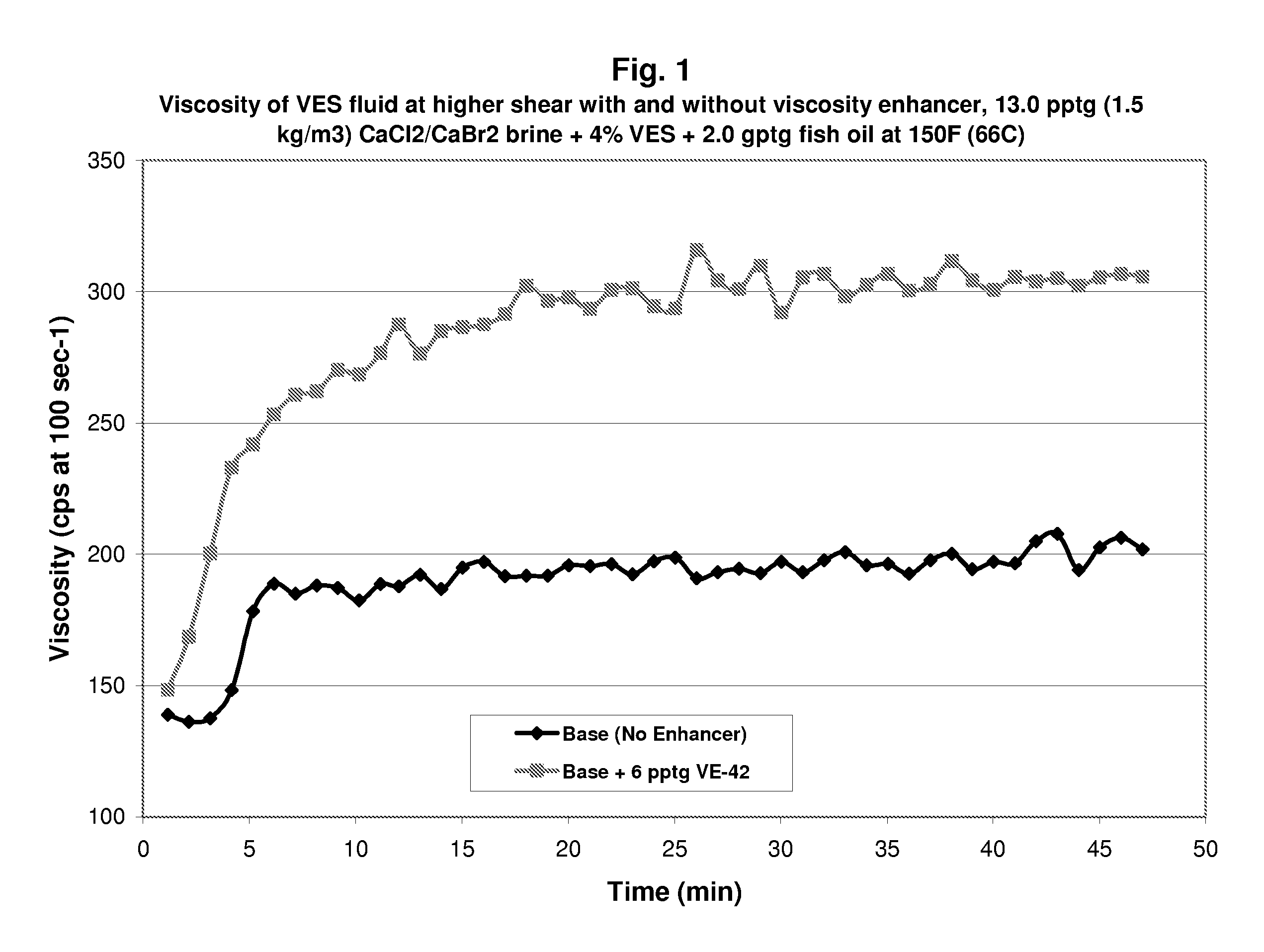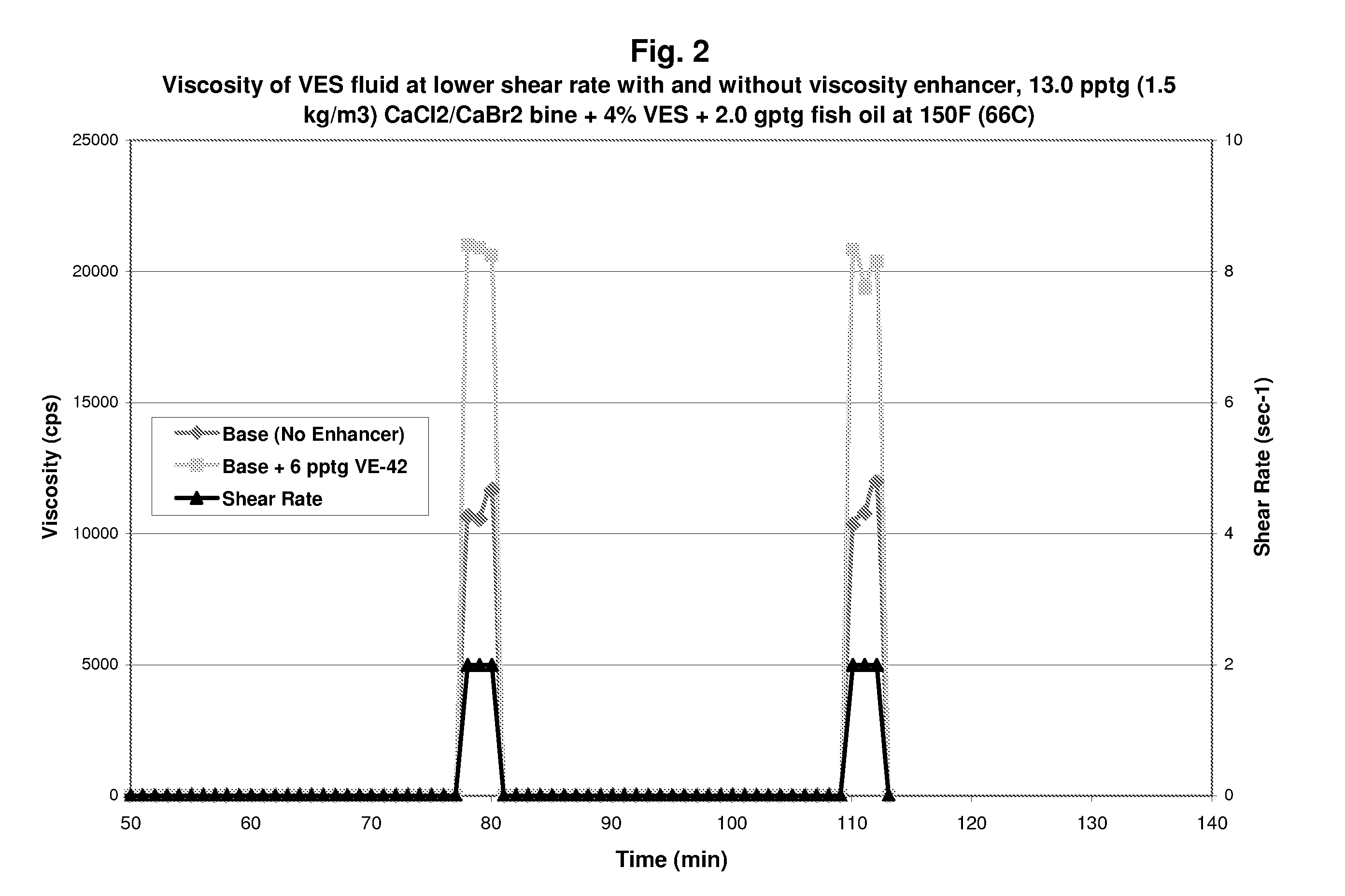Methods and Compositions for Diverting Acid Fluids in Wellbores
a technology of acid fluid and wellbore, which is applied in the direction of fluid removal, wellbore/well accessories, chemistry apparatus and processes, etc., can solve the problems of reducing oil and gas production, affecting the production efficiency of hydrocarbons, and unable to flow readily into the well, so as to achieve easy and quick recovery, reduce the viscosity of viscoelastic surfactant gelled fluid, and easy to produce fluid
- Summary
- Abstract
- Description
- Claims
- Application Information
AI Technical Summary
Benefits of technology
Problems solved by technology
Method used
Image
Examples
examples 1
[0083] Shown in FIG. 1 is a graph of the viscosity of a VES gelled fluid, 13.0 pptg (1.5 kg / m3) CaCl2 / CaBr2 brine with 4% VES at 150° F. (66° C.) and 2.0 gptg fish oil breaker. The two graphs are with and without 6 pptg (0.7 kg / m3) VE-42 (nano-sized ZnO viscosity enhancing particles) as a function of time. It may be seen that the fluid with the VE-42 viscosity enhancer had noticeably increased viscosity as compared with the fluid with no viscosity enhancer; thus the viscosity enhancers herein do increase the viscosity of the VES gelled fluid and enhance and increase their ability to serve as diverting fluids.
example 2
[0084] Similar results from FIG. 1 are shown for the Example 2 fluids in FIG. 2. FIG. 2 is graph of the viscosity of the VES gelled fluids of FIG. 1 as a function of time and shear rate, again showing that the fluid with 6 pptg (0.7 kg / m3) VE-42 particles has increased viscosity, particularly at the shear rates indicated.
example 3
[0085]FIG. 3 is graph of the viscosity of a VES gelled fluid containing 3.0 gptg fish oil internal breaker and no viscosity enhancer as a function of shear rate, after different break times. One fluid was allowed to break over approximately 8 hours and the completely broken fluid was allowed to break for 24 hours before measurements. No viscosity enhancer was used in the internal break tests of FIG. 3. This Example demonstrates that the viscosity of the VES gelled fluids herein may be reduced completely using the internal breakers herein.
PUM
 Login to View More
Login to View More Abstract
Description
Claims
Application Information
 Login to View More
Login to View More - R&D
- Intellectual Property
- Life Sciences
- Materials
- Tech Scout
- Unparalleled Data Quality
- Higher Quality Content
- 60% Fewer Hallucinations
Browse by: Latest US Patents, China's latest patents, Technical Efficacy Thesaurus, Application Domain, Technology Topic, Popular Technical Reports.
© 2025 PatSnap. All rights reserved.Legal|Privacy policy|Modern Slavery Act Transparency Statement|Sitemap|About US| Contact US: help@patsnap.com



